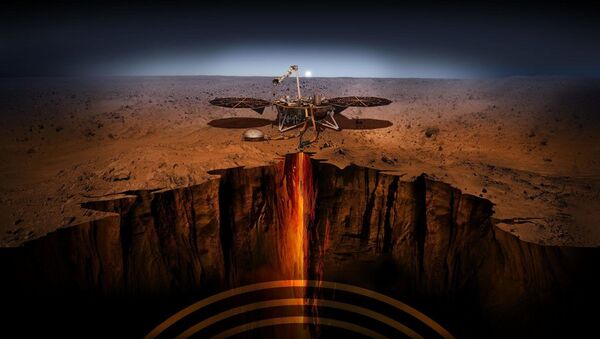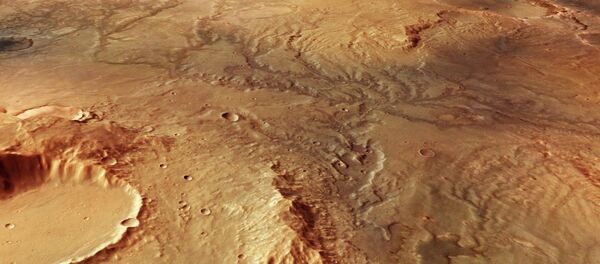The Interior Exploration using Seismic Investigations, Geodesy and Heat Transport (InSight) mission to Mars recently produced some unexpected results, providing researchers with some rather interesting data about the nature of the Red Planet.
According to UBC News, scientists established that the magnetic field at the site where the InSight lander had touched down is actually ten times stronger than originally anticipated, "and fluctuates over time-scales of seconds to days".
"One of the big unknowns from previous satellite missions was what the magnetization looked like over small areas," said Catherine Johnson, a professor at the University of British Columbia and lead author of the study that was published in the Nature Geoscience journal. "By placing the first magnetic sensor at the surface, we have gained valuable new clues about the interior structure and upper atmosphere of Mars that will help us understand how it – and other planets like it – formed."
She also remarked that the new data provides them with "a much more sensitive picture of magnetization over smaller areas, and where it’s coming from", as previously scientists had to rely on satellite observation to study the magnetic fields of Mars.
As the media outlet points out, researchers have already known that the Red Planet had a magnetic field billions of years ago which got "mysteriously switching off" at some point, and the rocks located on the surface seem to be too young to have been magnetized by that field.
"We think it’s coming from much older rocks that are buried anywhere from a couple hundred feet to ten kilometres below ground. We wouldn’t have been able to deduce this without the magnetic data and the geology and seismic information InSight has provided", Johnson explained.
The lander’s equipment also helped provide additional insight (pun not intended) into phenomena that occurs in Mars’ upper atmosphere and in the space around the planet, which occur when "a stream of charged particles from the Sun that carries an interplanetary magnetic field (IMF) with it" causes disturbances akin to solar storms there, as the Red Planet lacks the protection offered by a global magnetic field.
"Because all of our previous observations of Mars have been from the top of its atmosphere or even higher altitudes, we didn’t know whether disturbances in solar wind would propagate to the surface. That’s an important thing to understand for future astronaut missions to Mars", Johnson added.
The team now hopes to observe the magnetic field at the planet’s surface during the time when the Mars Atmosphere and Volatile Evolution (MAVEN) spacecraft passes over the InSight, in order to compare data supplied by both vessels.


